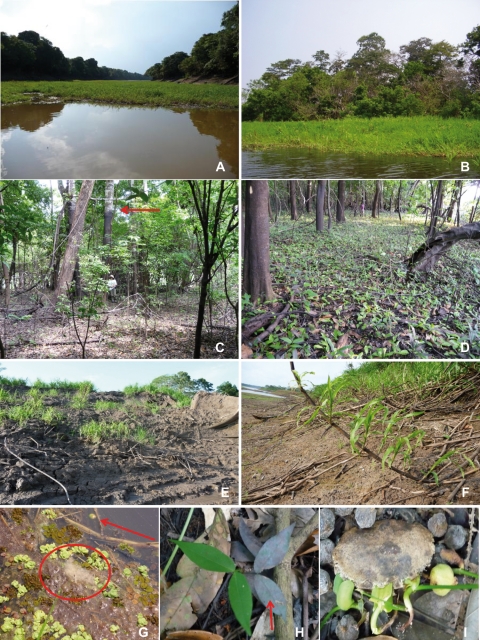Fig. 1.
Features of the várzea floodplain vegetation. (A) Várzea lakes colonized by macrophytes; (B) floating grasses on the edge of the flooded forest; and (C) interior of the forest during the terrestrial phase (the arrow points to a mark left in the tree that indicates the water level reached in the last flood); (D) extensive seedling bank in the interior of a várzea forest, about a month after water retreat; (E) colonization by seed-germinated plants of Paspalum fasciculatum; (F) colonization by vegetative regrowth of P. fasciculatum; (G) seeds of Pseudobombax munguba (circle) and other fruits (arrow) floating in water; (H) Clusiaceae seedling with new recently produced leaves and old leaves (arrow) which have survived the last flood (still covered with sediment); (I) seed germination in water of an unidentified legume.

